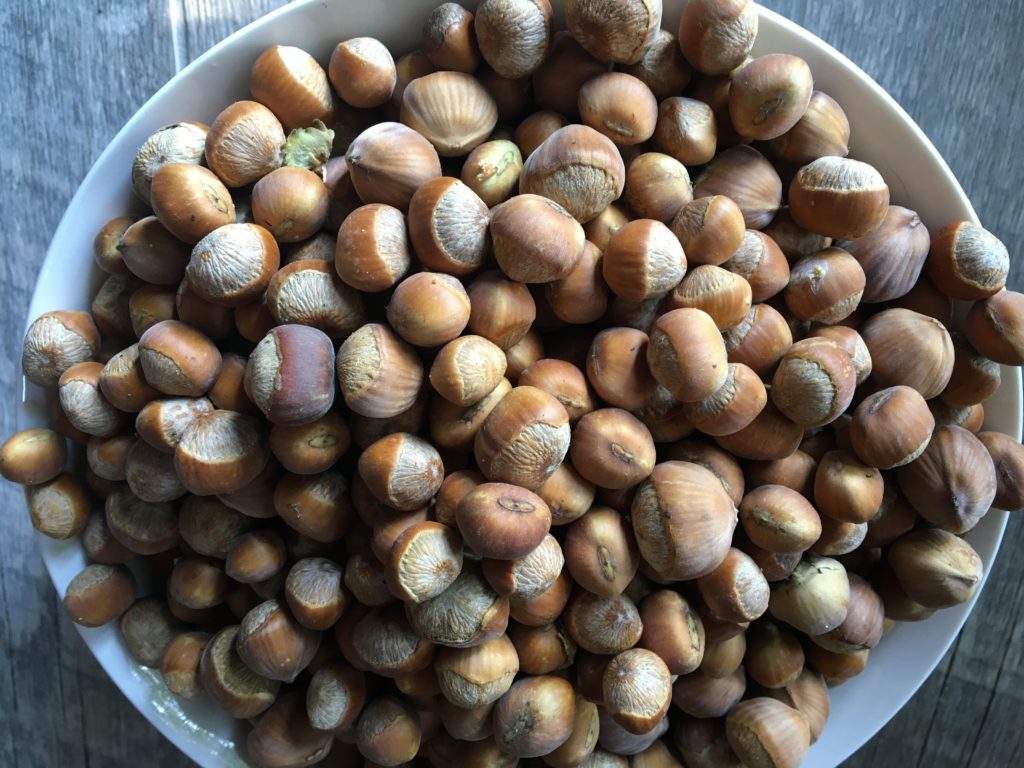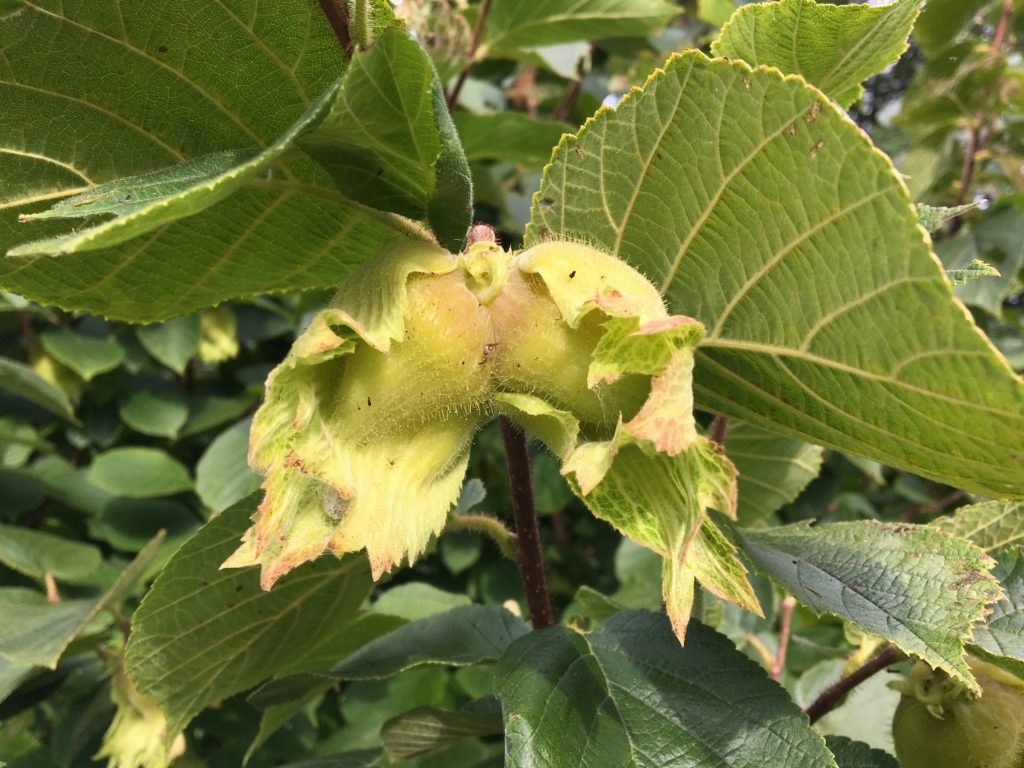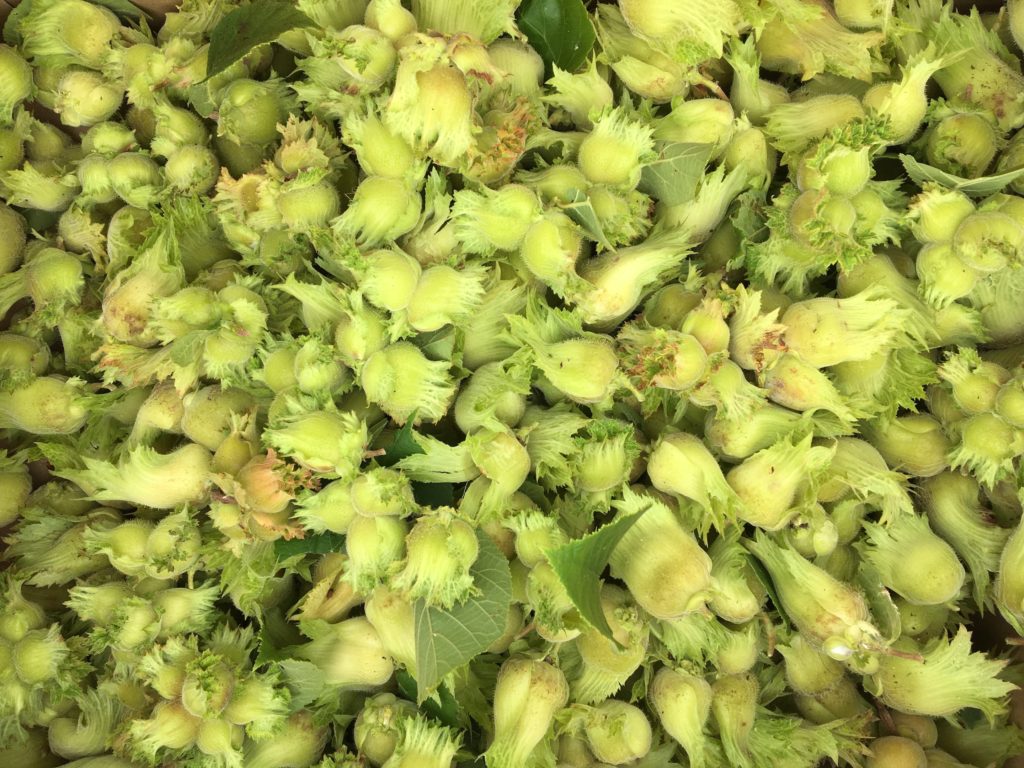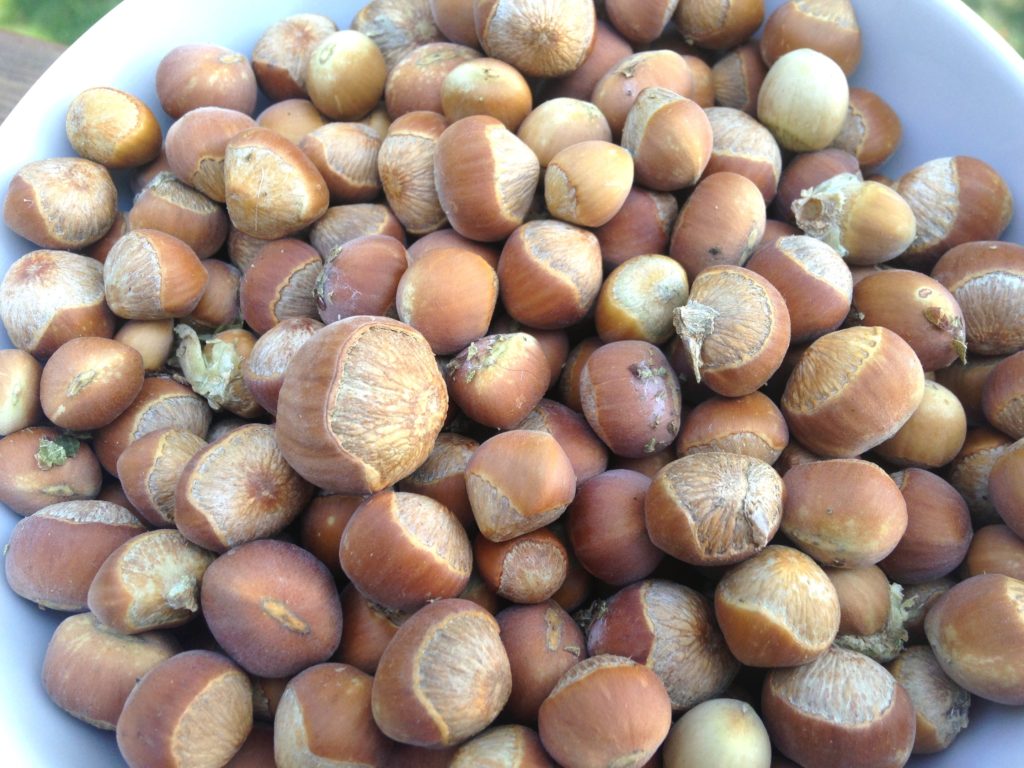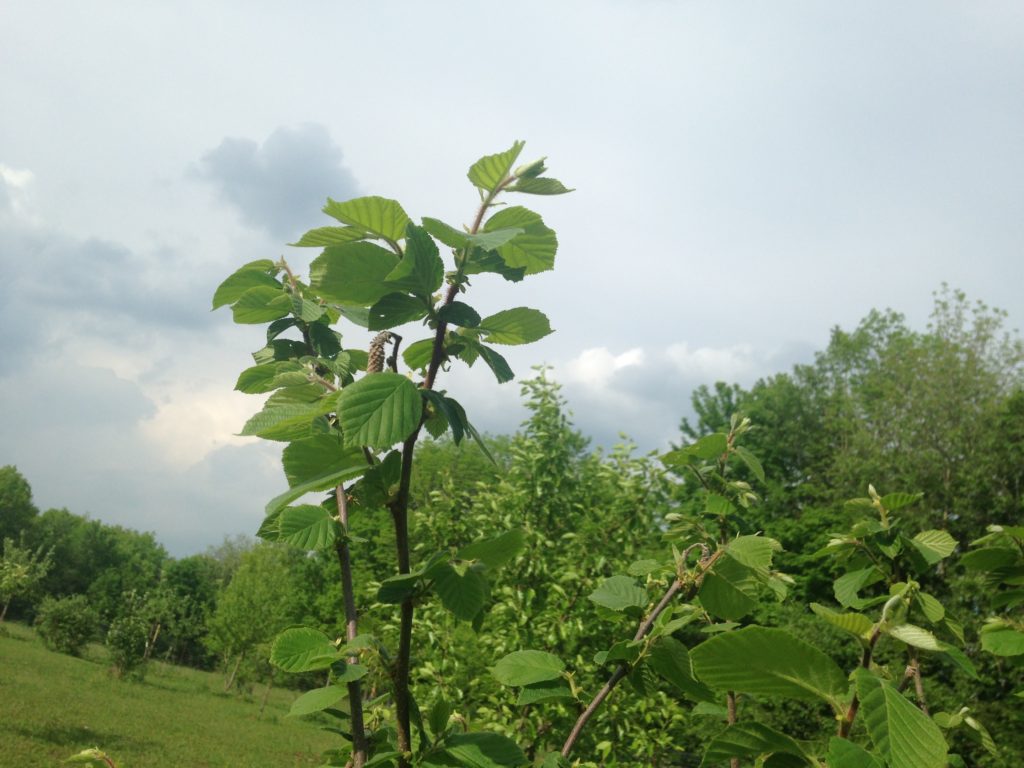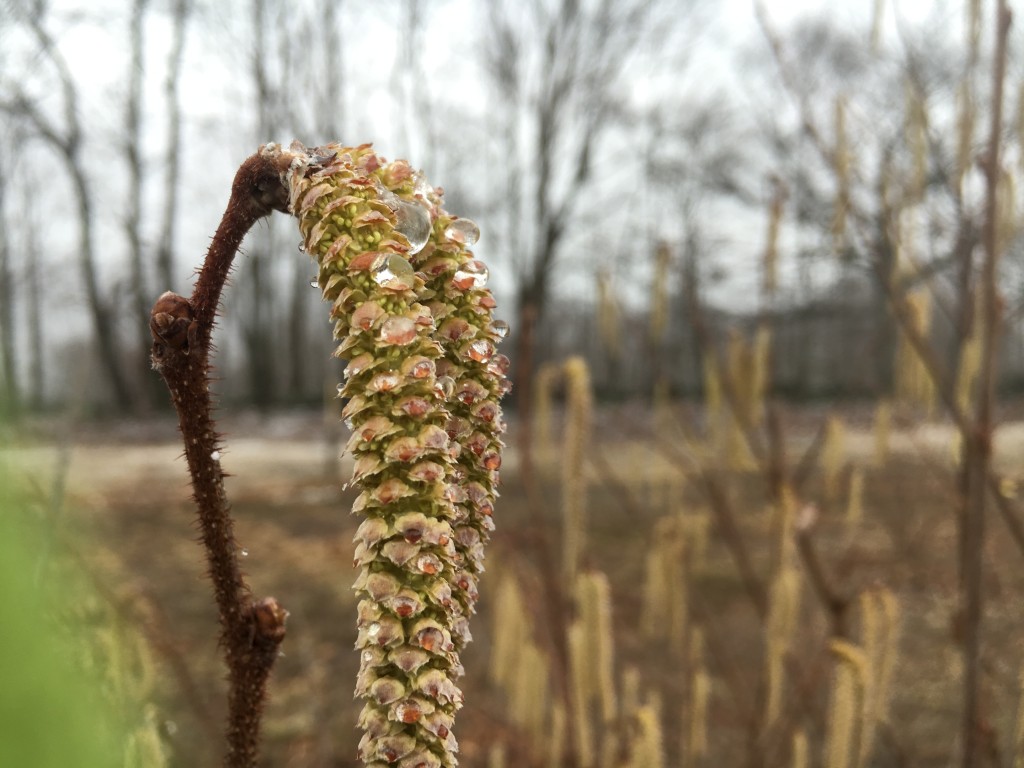The hazelnut bushes are thriving in the orchard and we got hundreds more nuts this year than last year. We have about four or five pounds. They grow in beautiful pods that are like frilly fingers on green hands that offer you the fruit. Once picked, the green frills dry into a husk which you have to peel off to reveal the hazelnut.
Like all nuts, hazelnuts are high in fat, but also a good source of magnesium, iron, fiber, calcium and vitamin D. Hazelnuts are the basis of Nutella, a delicious European chocolate spread. While the nuts dry, we’ll decide what to do with them.
